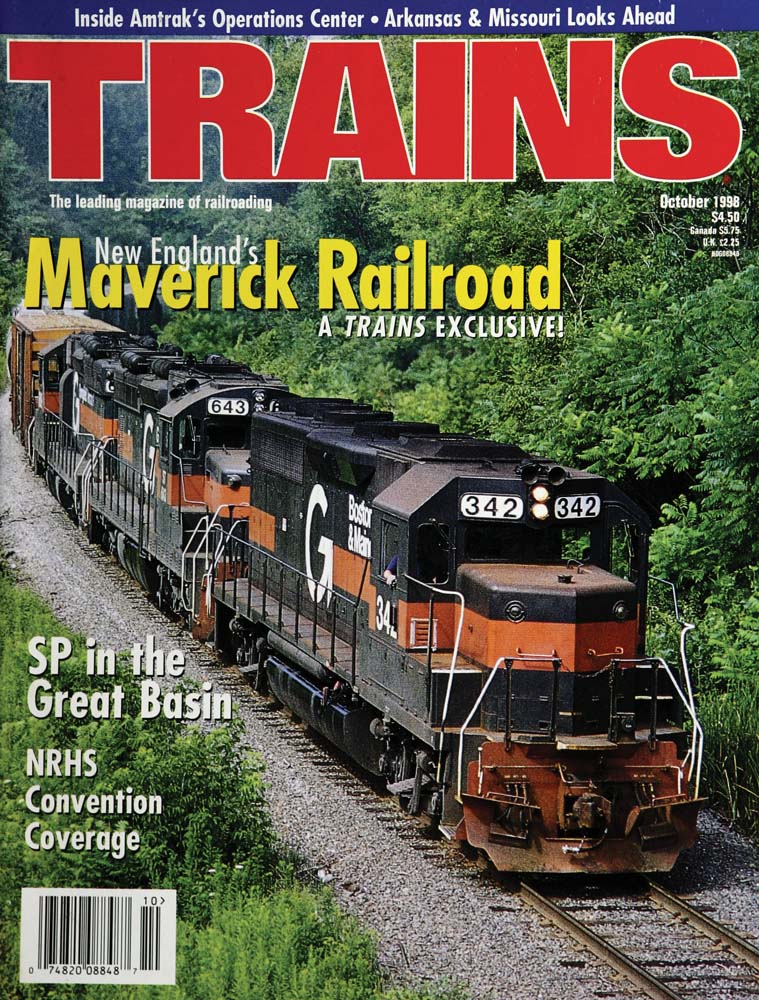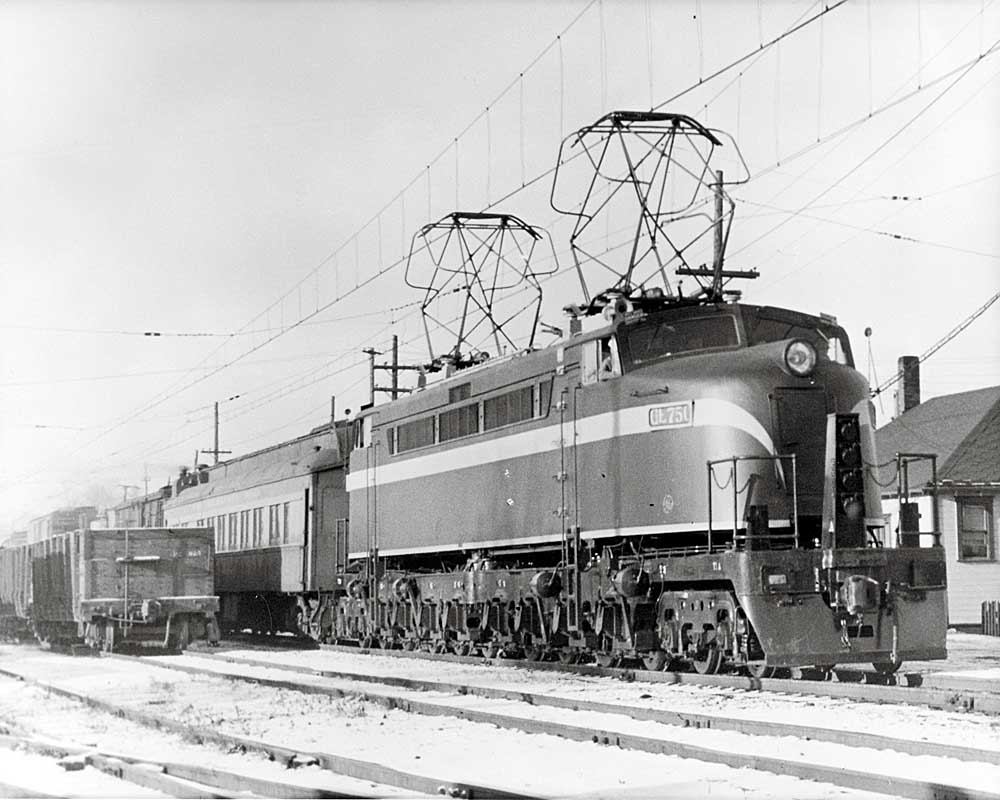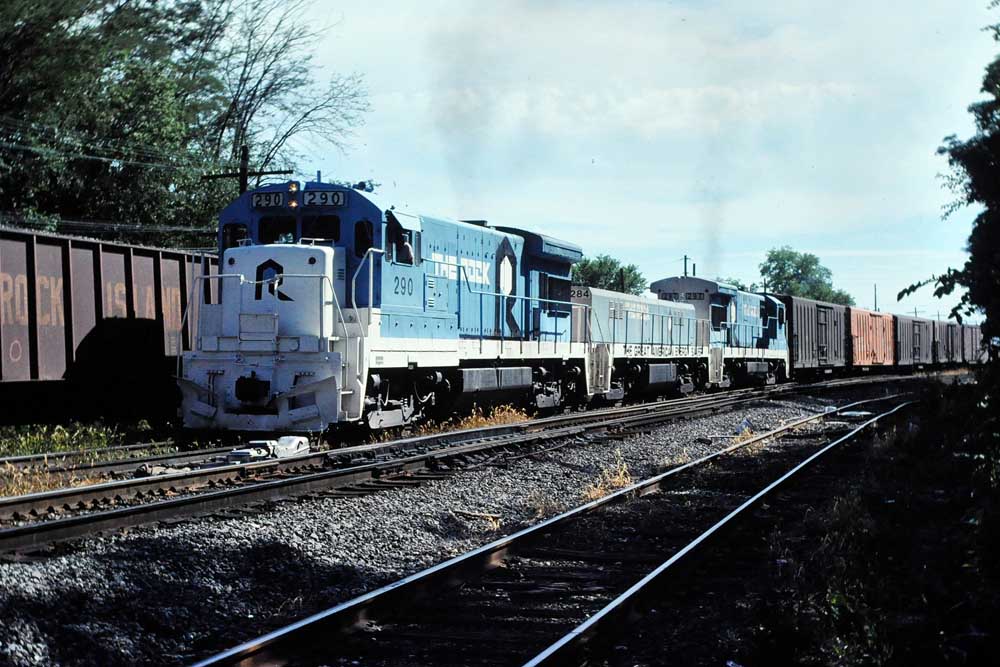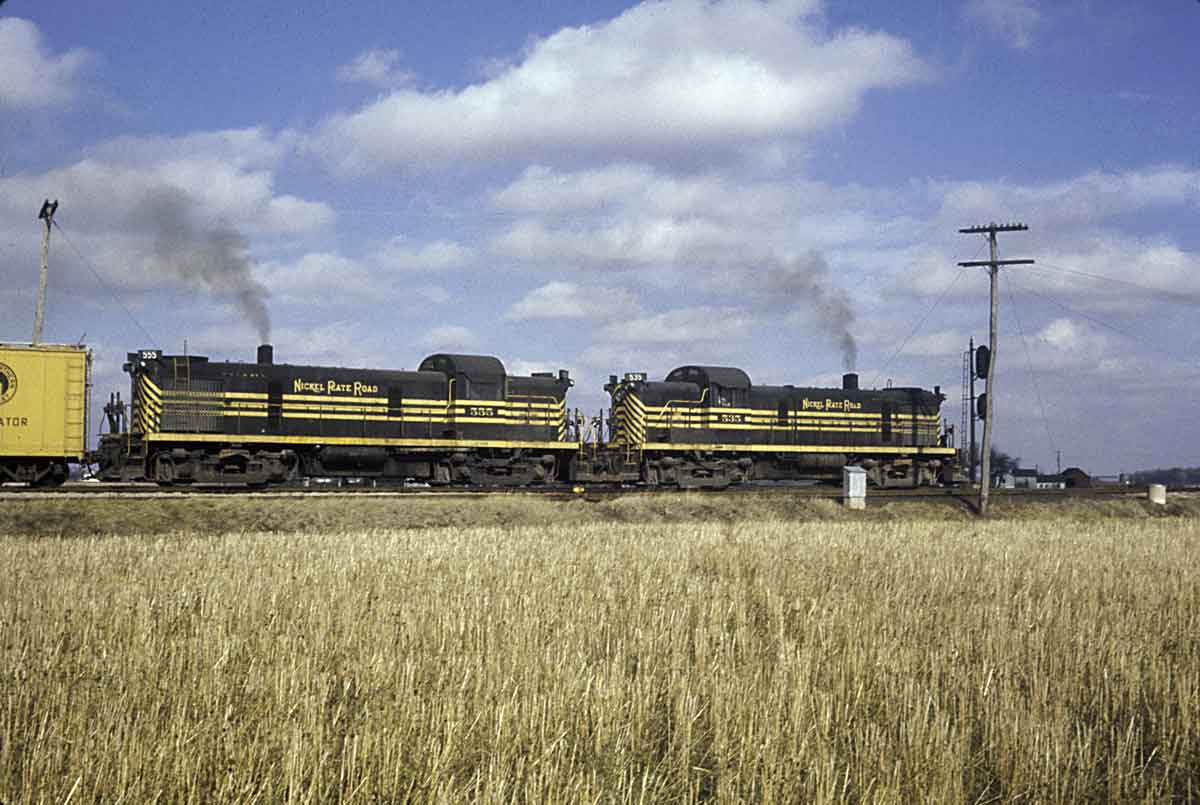Evidence of the victory hit Sheboygan, Wis., in the form of a special train of some 38 steam locomotives from the Green Bay Division of the Chicago & North Western. Pulled by an A-B-A set of EMD F7 and Alco FB diesels, the locomotives — cabs vacant, fires out, boilers drained, road numbers painted over, some already stripped for parts — were headed for their ignominious final reward: a Chicago scrap yard. For me, it was the saddest train since Lincoln’s funeral.
The eccentric, metallic sound of all those side rods, obediently churning, created an eerie symphony of clanks and rattles, not unlike the chains of Marley’s Ghost, as these zombies rumbled by. The earth trembled under them, but ever so slightly.
For all of its significance for the future of railroading, there wasn’t a lot of publicity attending this special train. Perhaps C&NW didn’t want mourners lining the right-of-way for those last 150 miles. The news was carried largely by word of mouth. There was no formal media coverage. Not a line appeared in the local Sheboygan Press, which dutifully reported all the calls the fire department answered, even cats rescued from trees and false alarms.
I heard about the event from the guys who hung out at the hobby shop. Well, it wasn’t a hobby shop per se; it was actually a drug store, with a section in the back devoted to HO-gauge model-train kits and other such items. The proprietor, Mert Finger, was an inveterate railfan and model railroader who often could be seen tinkering with a balky locomotive or assembling a freight-car kit at the pharmacist’s counter in between prescription refills.
The C&NW spur to the Reiss Coal Company dock ran straight behind the drug store, so it was not unusual to see men from a train crew pausing to refresh themselves at the soda fountain on a hot afternoon. (The fact that Finger kept a bottle of “medicinal brandy” under the counter might also have been a factor in the place’s popularity.) So, Mert apparently got the word about the special train from the railroad men and passed it along to the rest of us.
It didn’t take much to convince my uncle, Dave Goertz, that we should attend this historic event, and perhaps take a few pictures of it. He had a new Kodak Pony 35 camera, which neither of us knew how to use very well.
Knowing the train would take the freight belt line around town, we set up near the old roundhouse at the head of the south yards. About two hours later, the first glimpse of it came over the horizon. This was a slow mover. Only one-third of the way to Chicago and it was already well behind time.
I climbed on top of a diesel fuel tank to take the first series of shots from above. Then I handed the camera to my uncle, who took some more at ground level.
As soon as the train passed, we jumped into his 1950 Buick Special and floored it down U.S. 141 to an empty piece of land for some panoramic scenes. (My uncle knew most of the cops in Sheboygan, so we weren’t worried about speeding tickets.) I’ll never forget the view across the field of all those cold steel hulks, passing through town for the last time.
The caboose faded from view, and we began to pack up. In the distance we heard the strident diesel horn, discordantly blatting for the Weedens crossing. At that moment, I think we were both overcome by something akin to terminal nostalgia for an era that had just passed by, even though it was then only about a mile-and-a-half down the pike.














Where’s a photo of this?